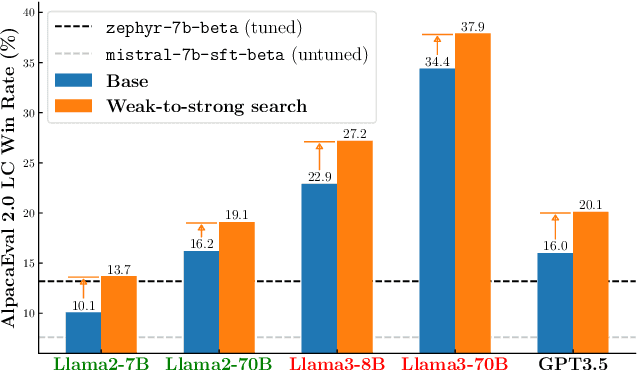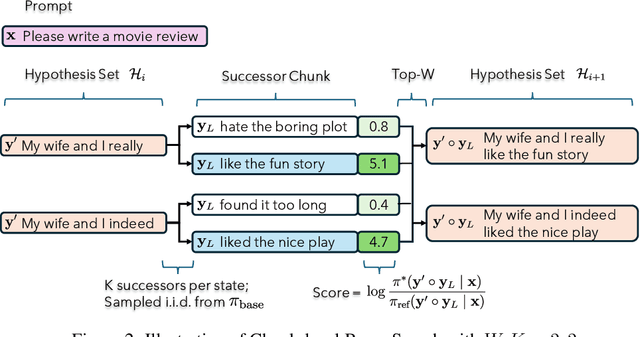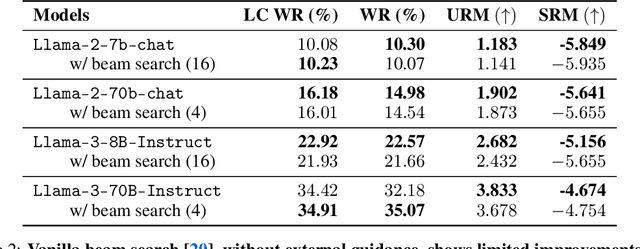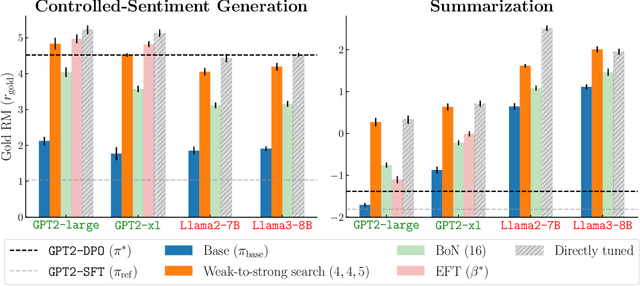Weak-to-Strong Search: Align Large Language Models via Searching over Small Language Models
Paper and Code
May 29, 2024



Large language models are usually fine-tuned to align with human preferences. However, fine-tuning a large language model can be challenging. In this work, we introduce $\textit{weak-to-strong search}$, framing the alignment of a large language model as a test-time greedy search to maximize the log-likelihood difference between small tuned and untuned models while sampling from the frozen large model. This method serves both as (i) a compute-efficient model up-scaling strategy that avoids directly tuning the large model and as (ii) an instance of weak-to-strong generalization that enhances a strong model with weak test-time guidance. Empirically, we demonstrate the flexibility of weak-to-strong search across different tasks. In controlled-sentiment generation and summarization, we use tuned and untuned $\texttt{gpt2}$s to effectively improve the alignment of large models without additional training. Crucially, in a more difficult instruction-following benchmark, AlpacaEval 2.0, we show that reusing off-the-shelf small model pairs (e.g., $\texttt{zephyr-7b-beta}$ and its untuned version) can significantly improve the length-controlled win rates of both white-box and black-box large models against $\texttt{gpt-4-turbo}$ (e.g., $34.4 \rightarrow 37.9$ for $\texttt{Llama-3-70B-Instruct}$ and $16.0 \rightarrow 20.1$ for $\texttt{gpt-3.5-turbo-instruct}$), despite the small models' low win rates $\approx 10.0$.
 Add to Chrome
Add to Chrome Add to Firefox
Add to Firefox Add to Edge
Add to Edge